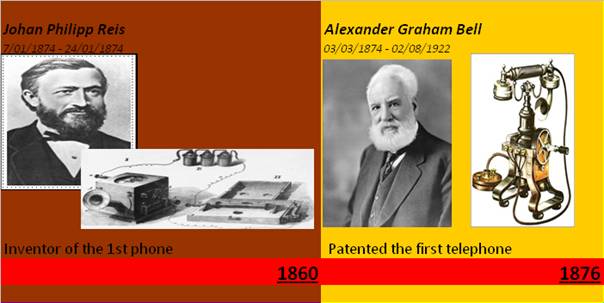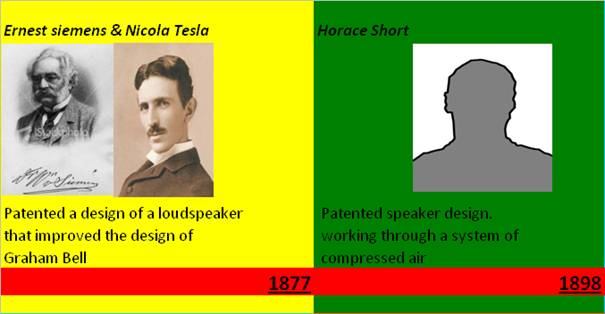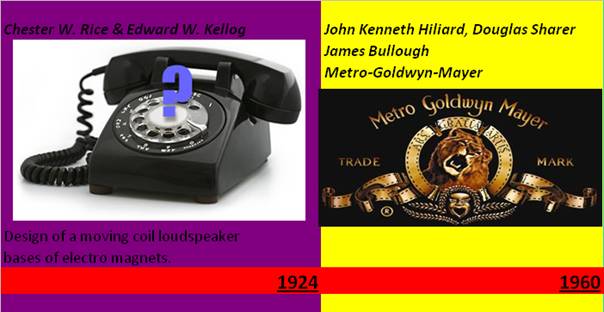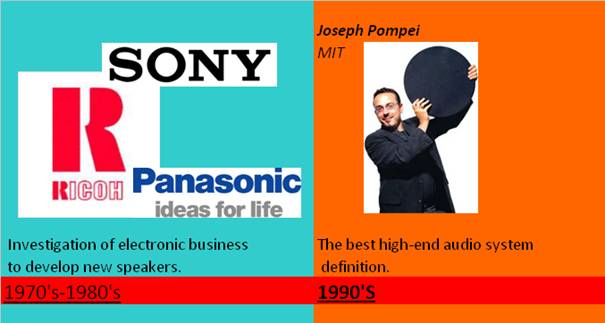What's a speaker?
A Speaker is a device that delivers the air vibrations, which are heard by our ears. It is a transducer that converts one form of energy to another as the electric signals into mechanical vibrations or sound that we hear.

History about the speakers.





-Johan Philipp Reis installed an electric loudspeaker in his telephone in 1861; it was capable of reproducing pure tones, but also could reproduce speech
-The first patented electrical speaker device was patented Alexander Graham Bell in 1876 for the purpose of making the telephone.
-Later Ernst Siemens and Nicola Tesla improved over Bell’s invention in 1877 and 1881 respectively.
-Horace Short patented aloudspeaker design that uses compressed-air mechanism in 1898.
-Pathe and Victor Talking Machine Company were few companies that incorporated the compressed-air speakers in their players but the sound quality was poor and producing low volume sound was not possible
-In the more advanced design we use moving coil transducer, which was patented by Chester W. Rice and Edward W. Kellogg in 1924. The moving coil transducer used electromagnets as permanent magnets were costly at that time. It was only in the 1930s that filters were used in the speakers to increase the level of sound pressure, frequency response and overall quality of the device output
-The Shearer Horn System for Theatres was the first speaker system of industry standard that was installed in 1937. This speaker system was installed by Metro-Goldwyn-Mayer, an American media company that is in production and distribution of TV programs and movie. This system was designed by John Kenneth Hilliard, Douglas Shearer and James Bullough Lansing. It consisted of four 15" low frequency drivers, a 375 Hz crossover network and a single sectoral horn with two air-compression transducers that respond to high frequencies. Many improvements have been made on the speaker like development in cone materials, inclusion of high-temperature bonding agent, improvement on permanent magnet materials, improved techniques for measurement, finite element analysis and designing of speakers using the aid of computers.
-Over the next two decades, several large companies, including Matsushita (Panasonic), NC Denon, and Ricoh attempted to develop a loudspeaker based on this principle, and published a paper describing one attempt in 1983. While they were successful in producing some sort of sound, problems with cost, feasibility, and extremely high levels of distortion (>50% THD) caused the almost total abandonment of the technology by the end of the 1980's
-While a graduate student developing '3D Audio' at Northwestern University in the late 1990's, Joseph Pompei had similar ideas of using ultrasound as a loudspeaker, largely to overcome deficiencies he saw with traditional methods of sound reproduction. After performing extensive research on the idea, he discovered the large body of knowledge in the field of nonlinear acoustics, as well as the earlier attempts at using ultrasound as an audible source. Soon after arriving at MIT, his insight led him to identify – and subsequently rectify – the barriers which had plagued the earlier researchers. Through a combination of careful mathematical analysis and solid engineering, he was able to construct the very first, and still only, practical, high-performance audio beam system.